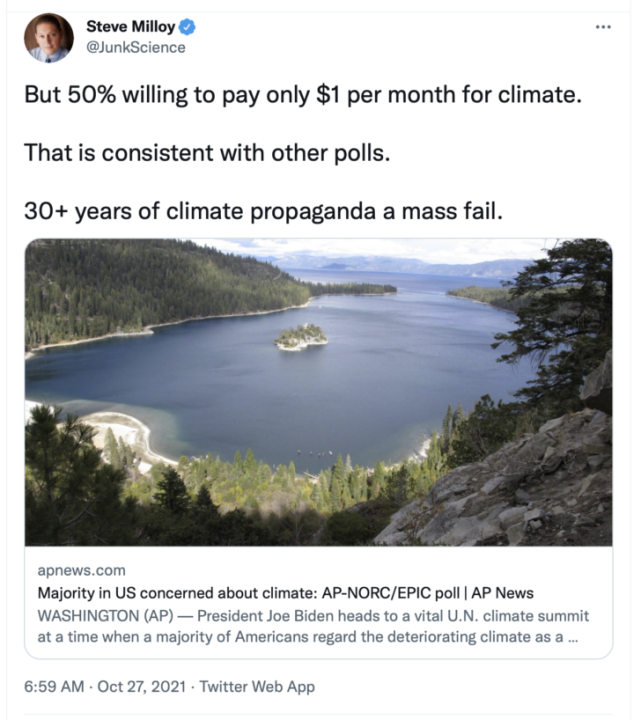The year 2021 may go down in history as the year that foretold the end of the climate idiocy movement — although the movement is unlikely to take the hint. This year witnessed the follies, failures and lies of climate idiocy laid bare for all to see — that is, if the media had actually reported them.
So here are the 10 biggest failures of the climate movement in 2021. The only reason the climate movement survives past these flops is because the mainstream media keeps it afloat by failing to honestly report the news.

1. European wind failure causes disastrous global energy crisis. As Europe has closed its coal plants in a rush to embrace wind turbines over the past 20 years, 2021 witnessed a decrease in wind and the ensuing failure of European wind turbines. With fewer coal plants to fall back on, Europe was forced to rely on natural gas plants, causing natural gas prices to skyrocket and a global energy crisis. Some of the outcomes: energy company failures, manufacturing and fertilizer plant shutdowns, projected increase from 50 million to 80 million in the number of Europeans living in energy poverty and a greater reliance on Vladimir Putin’s goodwill for supplies of natural gas. Plus, emissions have increased. The media has been largely silent on the ongoing energy crisis and emissions backfire, especially with respect to its origins in green policies.
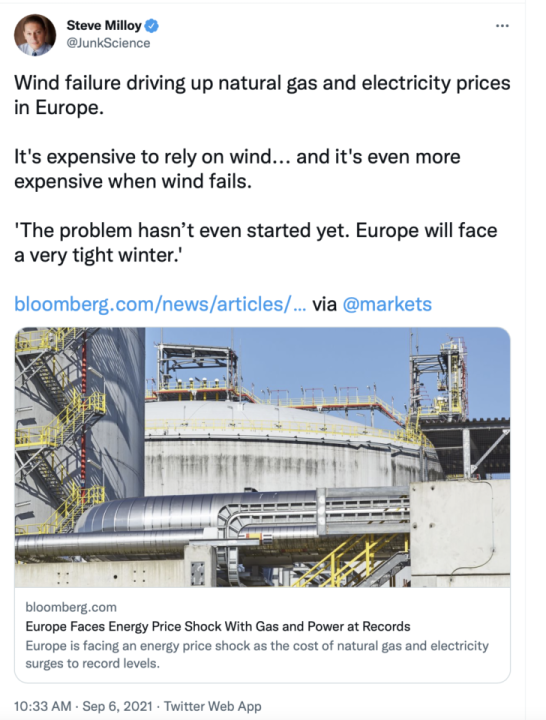
2. Frozen Texas windmills causes blackouts that kill dozens. As bitterly cold weather approached Texas before Valentine’s Day weekend, Texas regulators opted to rely on wind turbines to provide 30% of the state’s electricity. But when the weather hit, the wind turbines froze. Because of the faith that the wind turbines would work in the approaching cold weather, back-up natural gas facilities were not prepared to step in to fill the gap. Much of Texas went dark and the state came within just a few minutes of a total grid failure that could have last weeks. More than 200 died as a result of the power failure. The media response has been to try and shift blame from the wind turbines to the fossil fuel plants. But the bottom line is: The wind failed first and worst in Texas.
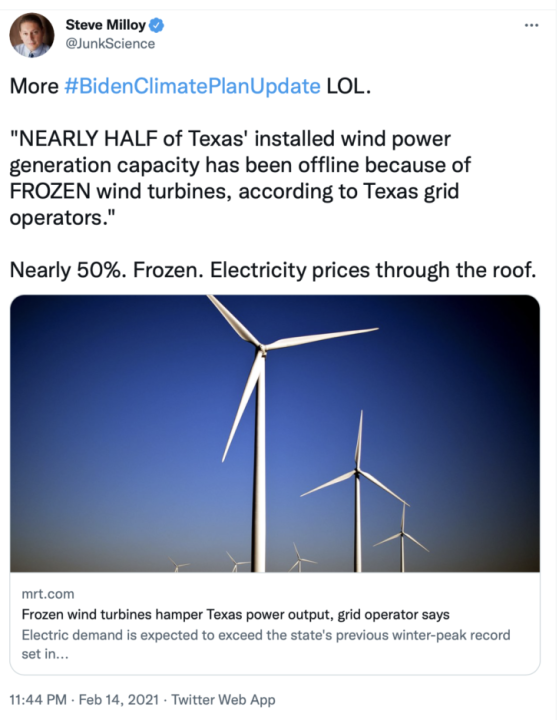
3. COP26 fails to ‘consign coal to history.’ The president of this year’s annual UN climate meeting (COP-26) set as a conference goal the “consigning of coal to history.” But ahead of the conference, West Virginia Sen. Joe Manchin exercised his own veto of sorts to effectively block President Biden from zeroing out the U.S. coal industry by 2030. Neither the coal-loving Chinese nor Russian presidents (both putting off “net zero” until 2060) even bothered to attend the conference. The leader of coal-dependent India showed up but delayed his country’s elusive net-zero goal until an unimaginable 2070. High natural-gas prices (See No. 1, above) will cause U.S. utilities to burn about 20% more coal this year. The cheerleading media tried to spin the climate movement out of this failure with headlines such as “World leaders reach climate agreement at U.N. summit following two weeks of negotiations.”
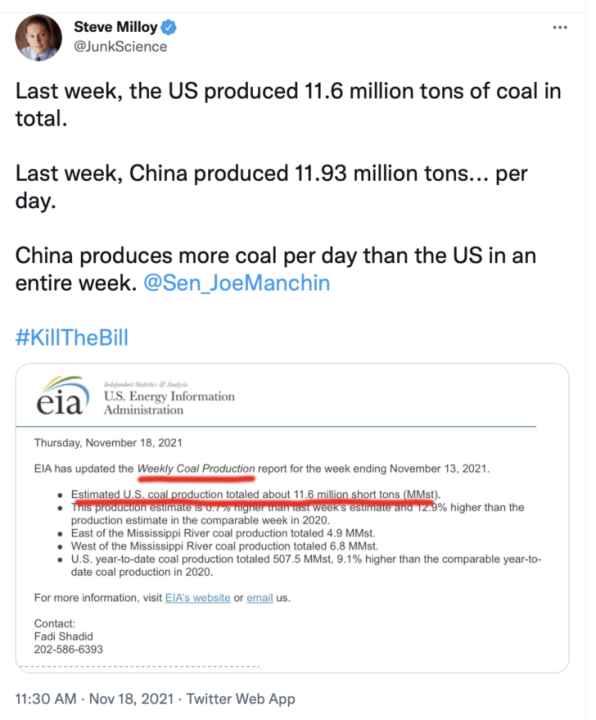
4. Biden’s war on fracking backfires — raises energy prices and emissions — and makes the US dependent on OPEC again. President Biden campaigned in 2020 on banning fracking and his first year in office has not disappointed. Biden has taken a number of actions to depress US oil production as oil demand ramped up from the lows during the COVID pandemic. Throw in the global energy crisis (See No. 1) and Americans are paying the highest prices for gasoline in more than a decade. Biden has “tried ” to alleviate this crisis by asking the OPEC cartel to increase oil production, signaling the transfer of energy dominance from the US (under President Trump) back to the cartel. OPEC then rebuffed Biden. High natural gas prices have also caused US electric utilities to burn 20% more coal which will result in an increase in US emissions.
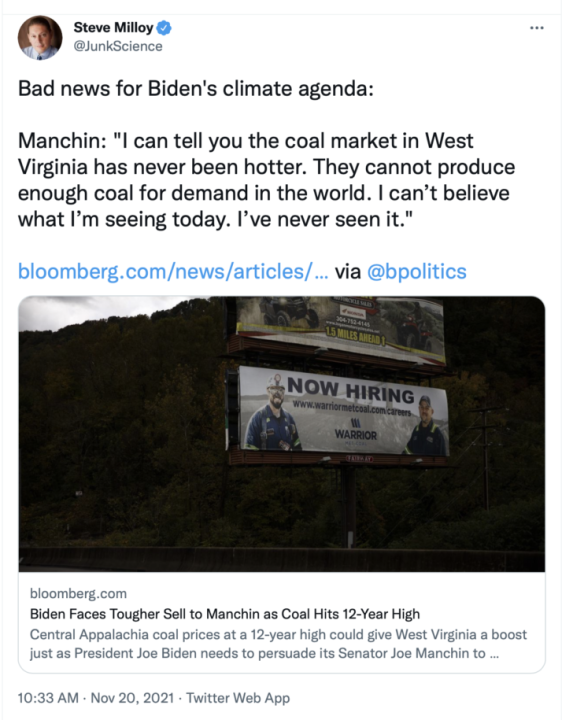
5. Fraud Trifecta: Nature Conservancy sells phony carbon offsets to publicly traded companies. The Nature Conservancy, the largest green group in the US, was caught selling phony carbon offsets, which are fake in the first place. The carbon offsets were sold for trees that were never in any danger of being cutdown. The purchasers of the offsets included large corporations like Blackrock, Disney and JPMorgan Chase, which then touted their green credentials to the public. The fraudulent sales of fake offsets that were then used to fool investors (which is against securities law) makes this a story of a green fraud trifecta.

6. Sen Manchin vetoes President Biden’s Clean Electricity Performance Program. The original version of President Biden’s multi-trillion dollar Build Back Better spending orgy included a provision that would have effectively federalized the US electricity grid with the goal of essentially eliminating fossil fuel power plants from the grid by 2030. But in a 50-50 U.S. Senate, it was West Virgina Sen. Joe Manchin who had the ironic opportunity to exercise the veto pen to remove the provision from the BBB bill. Although the bill remains chock-full of bad climate provisions, the most dangerous provision was nixed by Sen. Manchin.
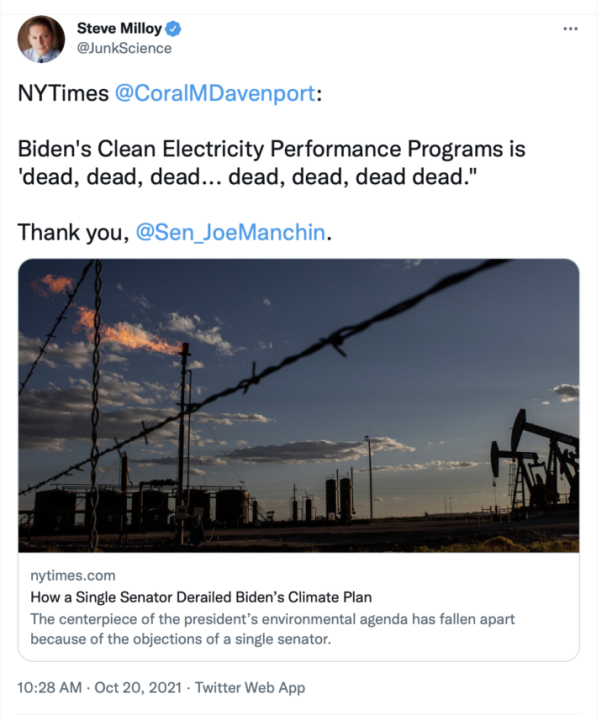
7. Western wildfires burn up Microsft’s carbon offsets. In 2013, software giant Microsoft pledged to become carbon neutral in part through the purchase of carbon offsets. In 2021, much of these offsets went up in smoke in wildfires in Oregon. Ironically, Microsoft had touted carbon offsets as a way to manage forests. Guess not. In reality, the best way to manage forests is to cut trees down. US media has yet to report this story.
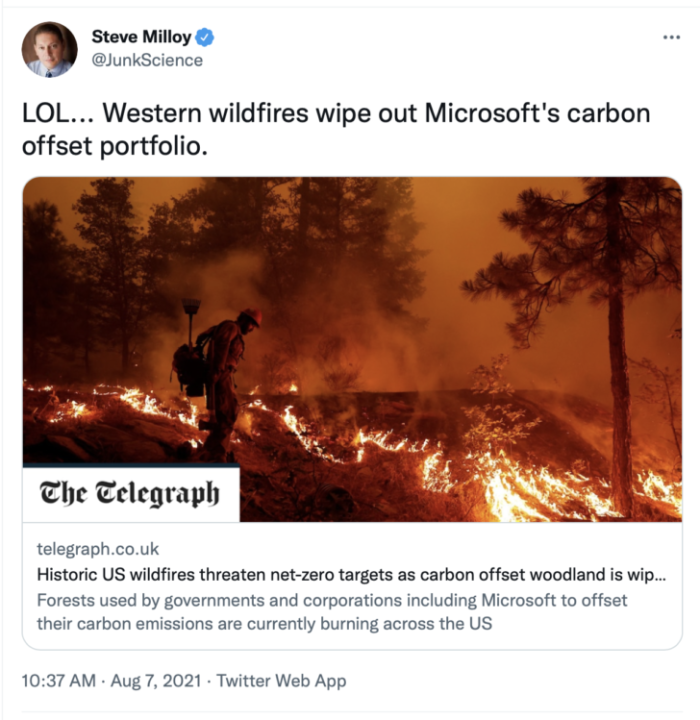
8.Ex-Blackrock sustainability investing chief says ESG investing is nonsense. Environmental, social and corporate governance (ESG) investing is all the rage these days with both publically-traded companies and investment firms touting their ESG credentials. The Biden Securities and Exchange Commission is even considering expansion of its current ESG rules to create more (versus more accurate) ESG reporting. But only the Telegraph’s Simon Foy thought it was worthwhile to report these comments by Blackrock’s former top ESG executive: “The vast majority of these products that they’re selling have little to no demonstrable impact on the environmental and social issues that they involve in their marketing.”
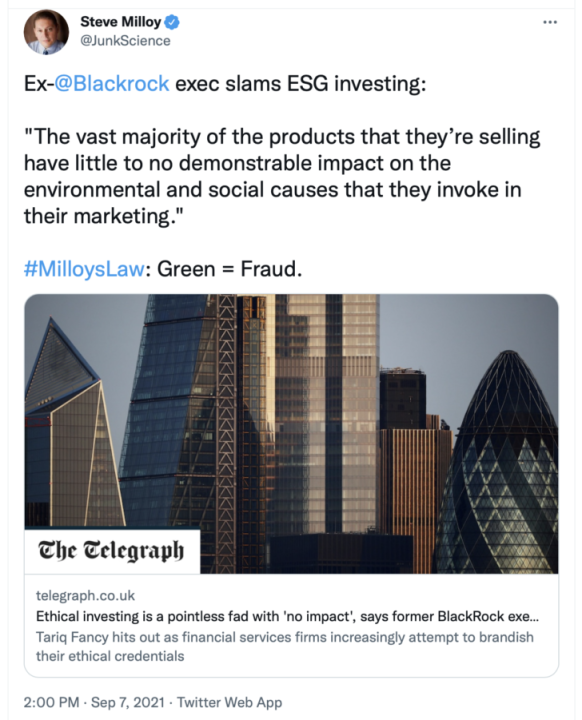
9. Federal Reserve staff pulls rug out from Fed move into climate. Climate activists have long pressured the Federal Reserve into becoming a tool of the climate agenda. They would like the Fed to pressure US banks to stop lending to the fossil fuel industry under the guise that climate change is some special threat to the financial system. President Biden reappointed Federal Reserve Chairman Jerome Powell to the Fed on the condition that he advance the climate agenda and appointed climate activist banker Lael Brainard to be Fed Vice Chair as a not-so-subtle reminder to Powell of his deal with Biden. Shortly before these announcements were made, though, New York Federal Reserve Bank staff pulled the rug out from the whole enterprise with its report, “How Bad Are Weather Disasters for Banks?” Unusually cheeky for a government report, the first two words in the abstract answered the question: “Not very.” But you would never know this if you don’t read the Wall Street Journal editorial page.
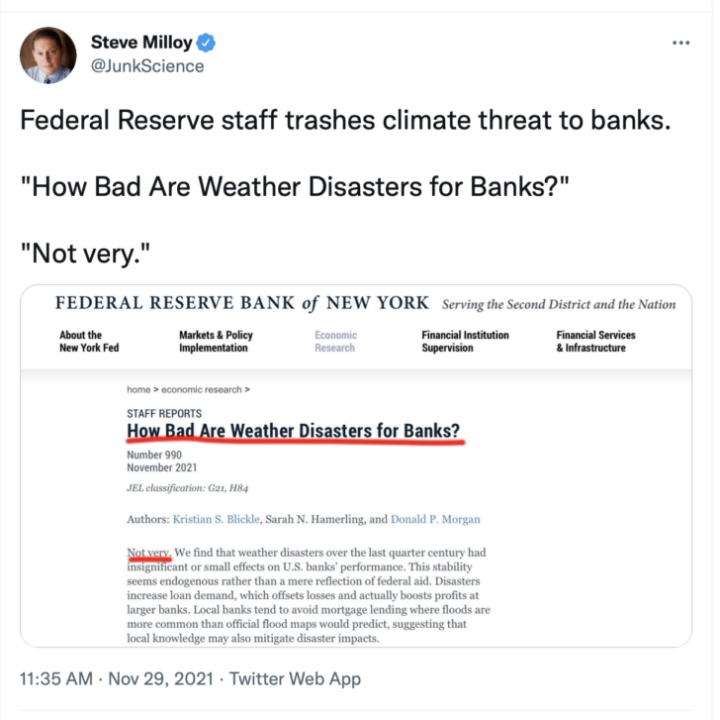
10. Americans are not interested in paying extra for climate. The Associated Press breathlessly reported in October the results of its own poll, “Majority in US concerned about climate.” But the measure of that “concern” didn’t make any headlines; Only 50% of these polled were willing to pay $1 more a month for electricity. This is consistent with other polls by groups as disparate as the Washington Post and Competitive Enterprise Institute, which also reported that people are not so concerned about climate that they are willing to crack open their wallets for it.
